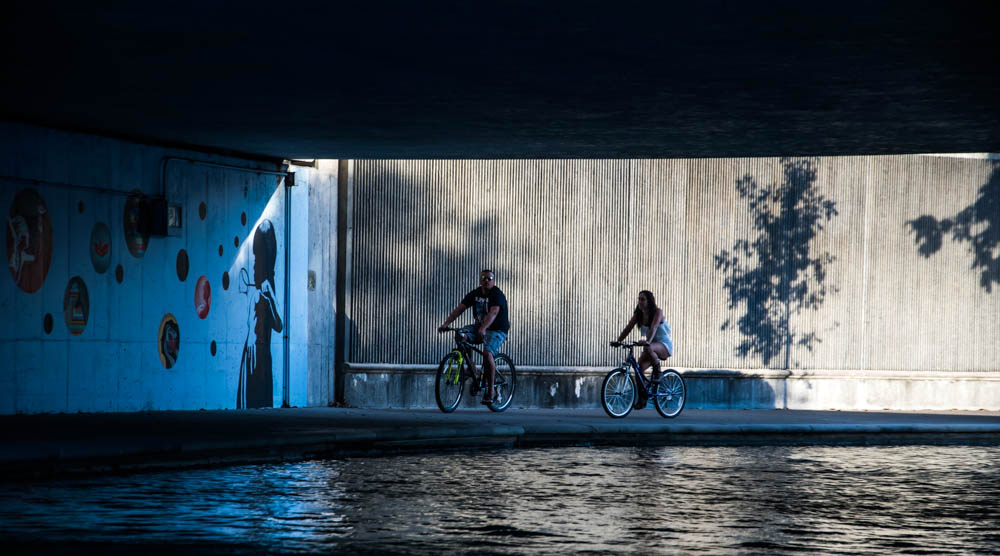Guest post by Alishba Alish (Delegate, Pakistan).
Indianapolis is a city of simplicity, serenity and is the capital of Hoosier. International Visitors from South Asia (India, Sri Lanka, Bangladesh, Afghanistan and Pakistan) under International Visitor Leadership Program got an opportunity share lives of Hoosiers for a week.
This city is desperate to meet the civil society organisations that work with the youth, to create changes and safer spaces for the younger people to steer the future of the city.
Reach for Youth Institute.
The experience begins with “Reach for Youth Institute”, mainly working at “Teen Court” “as its major theme. The Teen court aims to address the root causes of the issues the teen faces. It ranges from a verbal spat with the parents to shoplifting; offences within the jurisdiction of the school, referred by the school and the probation office of Indianapolis. Offences as grave as molestation are not considered under the teen court. The teen court is not a part of the judicial system and is more of a remedial solution to facilitate correctional behaviour in the teen. We should note that this is not the place for punishments. The teen understands accountability through this process.
The advocates are teenage students, for or against another teen, being judged by a slightly elder person who is a practising young lawyer. Based on the arguments proposed and the law, community services are prescribed. This helps the offender to get into something better as perceived. Most of them have continued with the community service out of contentment, joy and the happiness they have; that makes them more willful to become a better citizen. This has taken down the repeat offenders by a considerable percentage compared to the normal judiciary and police proceeding.
The Children’s Museum
The second day started with a visit to the “Children Museum”. This is a slightly unusual museum and this appeals to the children; with them comes the adults as well. It is an extraordinarily creative and innovative. It introduces the visitor to Children Leadership, Social Inclusion, Science, History, Culture, Literature, Astronomy, Astrology, Calligraphy, Chemistry, Zoology, Shopping and lot more.
Anirban: I find this intriguing even as an adult. While the gate has the miniature replica of the seven wonders of the world and a dinosaur desperately trying to enter the museum, the inside gives an entirely different feel. There’s a section of “The Power of Children: Making a difference”, where three lives are showcased. One of the first African American student, Ruby Bridges, who was integrated to the main stream “white” education. Anne Frank’s life shows the horrific holocaust. Ryan White was affected by HIV at an young age. This section of the museum is unique. People enter through the “wish granting tree”, where a child promises some thing and after the three lives are exhibited, they are asked to take action of any kind, to spread the stories. The story telling is strong in this part of the museum.
Inside the Childrens Museum, Indianapolis.
John Harris Loflin.
John Harris Loflin is an Educationist, a man of great experience, knowledge and wisdom. He shared powerful words about self-actualization, gender identity by linking it to fundamental rights calling them as basic needs: biological, social, safety, esteem and Self Actualization. He elaborated human need of recognition with the help of various pedagogies of recognition and expanded it further by building a co-relation of all these with power dynamics. Taking up the same note he explained the core values of democracy, referring to the historical peace and conflict events and concluded at the current arena, which again completed it cycle at basic human needs.
At the Center for Leadership Development.
The day next, we met people at the Centre for Leadership Development. CLD has a culture of college, career and community achievement. Established in 1977, it envisions to develop minority youth in central Indiana as future professionals, business and community leaders by providing encouragement and professional growth opportunities. CLD has its golden principles which are the core of each community building and Development. Those success principles are; Character Development, Educational Excellence, Leadership Effectiveness, Community Services and Career Achievements. It provides young people with opportunities to explore themselves, perform great in academics; by helping them in their regular study and courses. It provides parents and children to develop a healthy relationship by ensuring active communication and parent’s testimonials. It has a history of its own, which helps it to grow further. Particularly, in terms of funding its individual partners, foundations, and fundraising activities ensures its sustainability for next couple of year. It has designated officers who ensure the funding of next years by meeting with partners and encourage them to invest more.
With two of the three deputy mayors of Indianapolis.
We also met the deputy mayors of Indianapolis and discussed the issues the youth faces and how they plan to mitigate that. From migrating to greener pastures to homicides to rising fundamentalism and the lack of funds, every aspect was discussed. We drew parallels from the cities we come from.
We went to South Bend, Indiana and met professors at the Kroc Institute, University of Notre Dame. We discussed Islamic culture, the revival of the same, modernization of the Madrassa education and the need for it, millennials in Jewish-Palestinian solidarity activism.
Mr. and Mrs. Weiker.
We should mention the hospitality extended to us by the Weiker family. All of us were invited to their home where they had prepared food and we had a great evening.
That would be all for the Indiana chapter! Do ask us questions if you have any. It would be our pleasure to answer them!
- The Indiana Chapter of IVLP. - October 12, 2017
